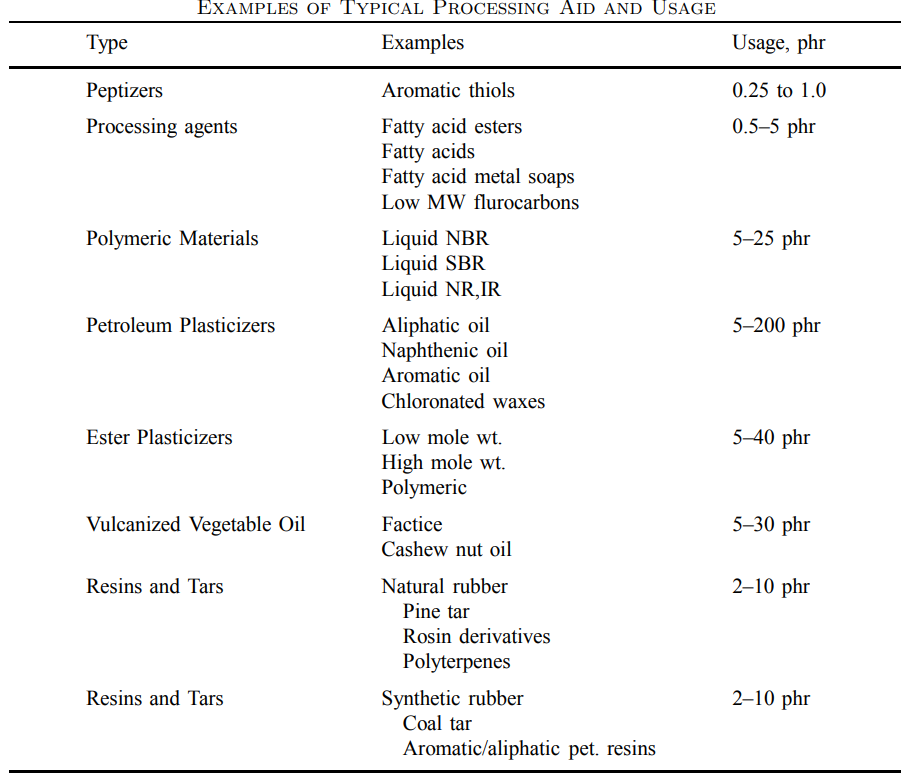Processing aids are a class of additives that are used in rubber compounds to improve processing characteristics, such as flow and dispersion, and to enhance the final properties of the cured rubber product. There are many different types of processing aids that can be used, and their selection depends on the specific application and processing requirements.
Some common types of processing aids used in rubber compounds include:
- Lubricants: These additives improve flow and reduce friction during processing, helping to prevent sticking and improve release from molds. Examples of lubricants include stearic acid, zinc stearate, and montan wax.
- Plasticizers: These additives improve flexibility and reduce stiffness in the rubber compound, making it easier to process and improving the final properties of the cured product. Common plasticizers used in rubber compounds include oils, resins, and esters.
- Antioxidants: These additives prevent the rubber from degrading during processing and storage by preventing oxidation. Examples of antioxidants used in rubber compounds include phenols, amines, and phosphites.
- Fillers: These additives are used to improve the mechanical properties of the cured rubber product, such as hardness, abrasion resistance, and tear strength. Common fillers used in rubber compounds include carbon black, silica, and clay.
- Processing aids: These additives are specifically designed to improve processing characteristics, such as flow and dispersion, and can include materials such as fatty acids, alcohols, and surfactants.
 (909) 987-1774
(909) 987-1774 Email Us
Email Us








